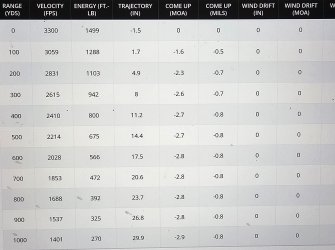@onethousandyrd I finally dedicated my focus to this thread and endeavor of yours, and I need to check my "egocentrism" (Saying something is easy for everyone based upon my level of talent & experience) I will shoot you straight on some things I saw you post. Consider it the "shooters tough love" advice. Hate me now, thank me later kinda stuff.
I demoed a Pulsar Digex C50 Day/Night scope with same resolution specd with the Zulus. The digital zoom past 7X made things a bit grainy. 14X was practically unusable to the extent of LR requirements. I didn't attempt 1000yd shots because it never even crossed my mind I'd use it for that. I would put the daytime max range at 300yds for "precision hits" on an IPSC plate with that $1500 camera/scope. I highly doubt a $600 camera/scope with 20X is going to resolve the image any better than the Pulsar. Night time use, with IR emitter, I could hit a coyote size target at 250yds, deer size target 400yds. Past 400yds I'd have zero confidence considering the pixelation on zoom. Not to mention the parallax error induced with a digital scope at LR. These scopes are for shooting varmints n such within a few hundred yards at night.
Thinking you can plug in a bunch of data and have the rig shoot as intended...buddy, Murphy must not even know your name! Or he's too busy trying to wreck my program. For instance, don't rely upon the cell phone weather report to be accurate for LR shooting. You don't want relative pressure data the weather station sends, you want STATION PRESSURE! The two can be very different. I know this because I've seen me make this mistake way back in the day.
Wind. Nothing but experience will enable you to call wind speed and value. You can use a Kestrel, but it's important after time to gauge this without the use of one and to see first hand how wind effects/deflects the bullet flight. Wind at the target can be different than wind at the shooter. Wind can increase/decrease and change value in the time it takes to settle in behind the gun and go through the shot sequence. This is why an experienced/competent spotter is an immense benefit to a shooter and why sniper teams operate in this manner. When I started out solo, I placed 3 IPSC plates abreast at 1000 and shot at the one furthest into the wind with no windage correction to see how far the wind pushed the bullet. Then I was able to conceptualize that deflection and correct with the proper hold or dial correction. Or you attempt to correct and the plates on either side pick up your misses. Misses are more important to understand than the hits.
You better make sure your homebrew rig is gas tuned and plain tuned all around. Like, 4 o'clock ejection, no over gassing, etc. POI and precision will change when tuning to optimum.
Your precision platform should be a front bag, or bipod with a weighted rear bag shooting bench or prone. If you haven't utilized a rear bag to steady your shot, and prevent vertical stringing, do get to learning. Make sure the buttstock is placed in your chest before putting the bag in place. I and many others make the mistake of letting the rear bag do most the work and this will dampen results.
If you go out banging steel at 1000yds out the gate, then bravo to you! If things don't go as planned, you hopefully have a better understanding of why.
Full recommendation:
Bolt gun (Gassers are second, but probably your first, lol)
Glass optics as I suggested previous
Kestrel
Good Spotter glass and person.
3ft caution tape near the plate
Attempt with 0-5mph winds
Good luck!

